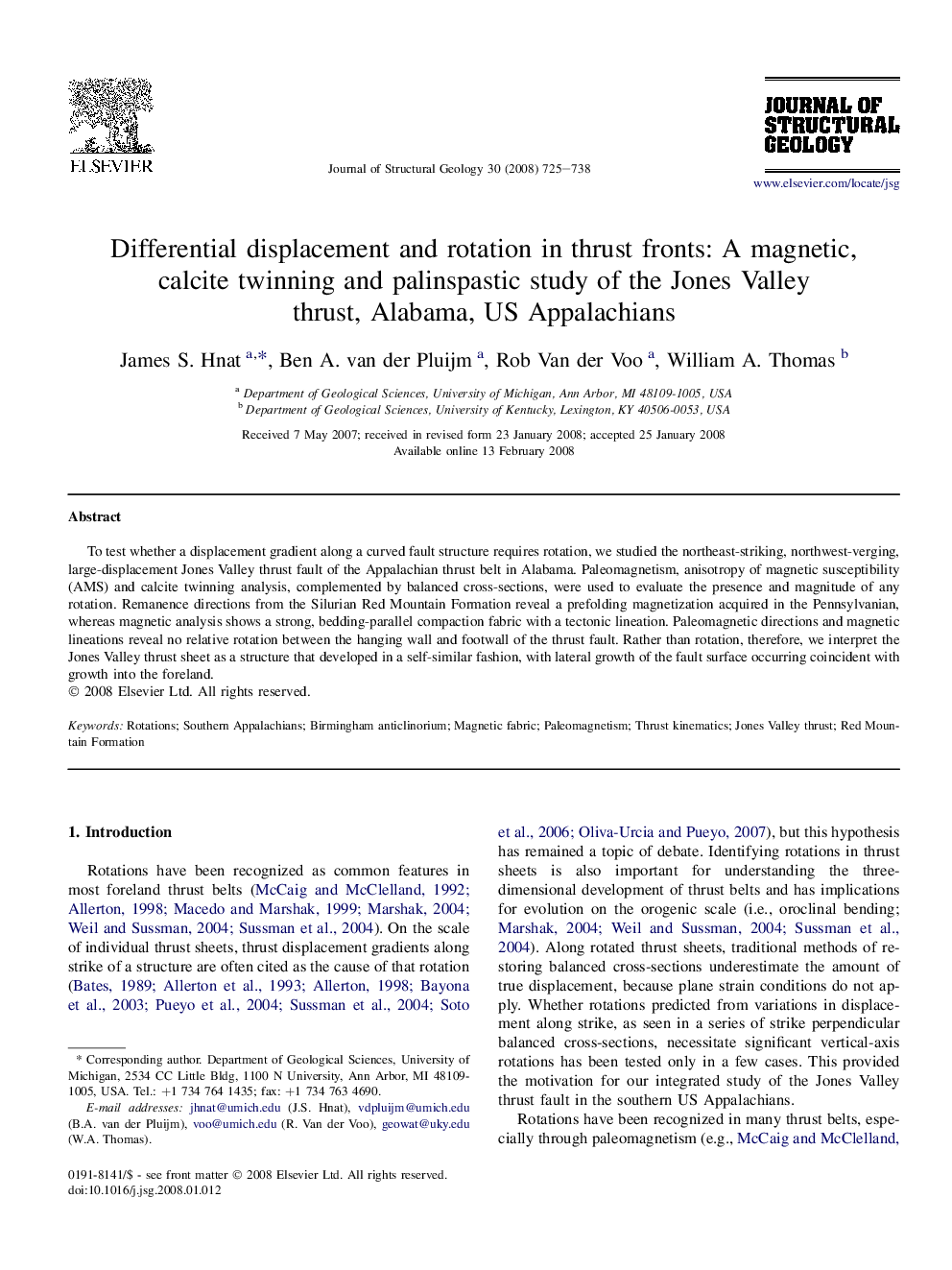| Article ID | Journal | Published Year | Pages | File Type |
|---|---|---|---|---|
| 4733706 | Journal of Structural Geology | 2008 | 14 Pages |
To test whether a displacement gradient along a curved fault structure requires rotation, we studied the northeast-striking, northwest-verging, large-displacement Jones Valley thrust fault of the Appalachian thrust belt in Alabama. Paleomagnetism, anisotropy of magnetic susceptibility (AMS) and calcite twinning analysis, complemented by balanced cross-sections, were used to evaluate the presence and magnitude of any rotation. Remanence directions from the Silurian Red Mountain Formation reveal a prefolding magnetization acquired in the Pennsylvanian, whereas magnetic analysis shows a strong, bedding-parallel compaction fabric with a tectonic lineation. Paleomagnetic directions and magnetic lineations reveal no relative rotation between the hanging wall and footwall of the thrust fault. Rather than rotation, therefore, we interpret the Jones Valley thrust sheet as a structure that developed in a self-similar fashion, with lateral growth of the fault surface occurring coincident with growth into the foreland.
